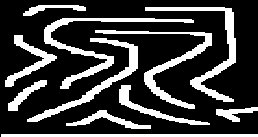An Opportunity to Learn about Fluids
Problem set No 1
Dimensions and Basic Fluid Properties
No1. (MY&O; Q 1.8)
In this equation, R is the pipe radius, Dp is the pressure drop along the pipe, m is the viscosity, and l is the length of the pipe.The volume rate of flow, Q, through a pipe containing a slowly moving fluid is given by the equation:
What are the dimensions of the term p/8 ? Is the equation dimensionally homogeneous? [Ans. dimensionless]
No2. (MY&O; Q 1.10)
In this equation, V is the blood velocity, m is the blood viscosity, r is the blood density, D is the artery diameter, A0 is the area of the unobstructed artery, and A1 is the area of the stenosis.
The pressure drop across a partial blockage in an artery (called a stenosis) is approximated by the equation:
Determine the dimensions of the constants Kv and Ku. Would the equation be valid in another system of units? [Ans. Each is dimensionless.]
No3. (MY&O; Q 1.29)
The information on a can of soft drink indicates that it contains 355 ml. The mass of the full can is 0.369 kg, while the weight of an empty container (retrieved from a rubbish bin) is 0.153 N. Determine the specific weight, density and specific gravity of the soft drink and compare that with water at 20 oC. [Ans. 9770 Nm-3; 996 kgm-3; 0.996]
No4. (MY&O; Q 1.33)
The temperature and pressure at the surface of Mars during a Martian spring day were determined to be -50 0C and 900 Pa.
(a) Determine the density of the Martian atmosphere if the gas constant is assumed to be the same as carbon dioxide. [Ans 0.0214 kgm-3]
(b) Compare that with the earth’s atmosphere (also during Spring) if the temperature and pressure are 18 0C and 101.6 kPa (abs). [Ans 1.22 kgm-3; 1.75%]
Subscribe to:
Post Comments (Atom)





No comments:
Post a Comment